Table of Contents[Hide][Show]
- Nutrivore Score for Wild Eastern Oysters – 3049
- Wild Eastern Oyster Nutrition Facts
- Eastern Oyster Nutrition Varies With Cooking, Processing and Source
- Oyster Nutrition Varies With Type
Health Benefits of Eastern Oyster Nutrients+−
- Eastern Oysters Provide 419% DV Vitamin B12 (Cobalamin)
- Eastern Oysters Provide 411% DV Zinc
- Eastern Oysters Provide 365% DV Copper
- Eastern Oysters Provide 157% DV Vitamin B7 (Biotin)
- Eastern Oysters Provide 144% DV EPA+DHA
- Eastern Oysters Provide 456.2 mg of Taurine
- Eastern Oysters Provide 46% DV Iodine
- Eastern Oysters Provide 41% DV Selenium
- Eastern Oysters Provide 29% DV Iron
- How Much Eastern Oysters Should We Eat Per Day?
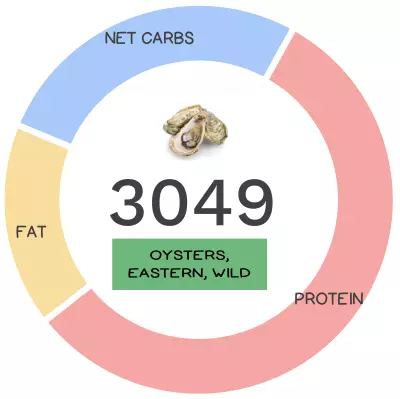
Granted they may not look appetizing, given their slimy appearance, still, oysters are consumed all around the world and are thought of as a delicacy (even though in the 19th century they were considered a working-class food). Whether you slurp them down on the half shell at a raw oyster bar or enjoy them smoked or baked, it’s worth the effort to find a way to overlook their “ickiness” and intentionally incorporate this nutritious shellfish into your diet.
Today oysters are thought of as a delicacy, but in the 19th century they were considered a working-class food.
Shellfish is a general term used to describe aquatic invertebrates with exoskeletons consumed as food, which basically means animals without backbones that live in the water and have some type of shell (even though they are not actually fish!). Bivalves are shellfish with a hinged two-part shell (called valves) found both in saltwater and freshwater environments and living everywhere from the tropics to the freezing Arctic. They’re incredibly ancient creatures, first appearing in the fossil record more than 500 million years ago! There are currently over 9,000 known living species of bivalves throughout the world, though humans only cultivate and routinely eat a small portion of those, including popular foods such as clams, mussels and oysters.
There are currently over 9,000 known living species of bivalves throughout the world!
Oyster is a common name given to a number of different families of salt-water bivalve molluscs, usually irregular in shape and highly calcified. There are edible oysters which include the popular Atlantic oysters, European flats, Olympia oysters, Pacific oysters (the most widely grown bivalve in the world) and Sydney rock oysters, while some oysters belong to a different family altogether and are harvested for the pearls they produce (both cultured and natural) in response to an irritant within their shell. Oysters are ancient creatures and evolved in the Early Triassic period (~250 million years ago) and have been consumed by humans since prehistoric times as evidenced by middens (piles of ancient shell remains) found worldwide. They have been cultivated in Japan since 2000 BC and in Europe since Roman times. Today, they are farmed in many parts of the world including Australia, China, France, Japan, and numerous places within the USA, most famously Chesapeake Bay. While it’s true this means we have access to this shellfish, the only problem is accessing this shellfish. Oyster shucking (aka opening) requires skill and has even become a competitive sport where professional “shuckers” are capable of opening shells in under three seconds! While it might take us “commoners” longer, it’s worth the effort to get to the prize inside!
Oysters are great for the environment as filter feeders, with studies showing individual oysters are capable of filtering up to 50 gallons (189 litres) of water per day!
Not only are oysters tasty, they are great for the environment too! These creatures are filter feeders with studies showing individual oysters are capable of filtering up to 50 gallons (189 litres) of water per day! This is why oyster reefs are gaining popularity as a means to restore ecosystems – by improving water quality, eliminating pollutants and providing habitats for hundreds of animals (oyster reefs increase the surface area of the bottom by up to fifty-fold). Jonathon Swift said it best when he remarked “He was a bold man that first ate an oyster.” True, but it’s a good thing he or she did – now that we know all the benefits this seafood has to offer, it’s easy to follow suit.
Learn What Foods to *ADD* to Your Diet
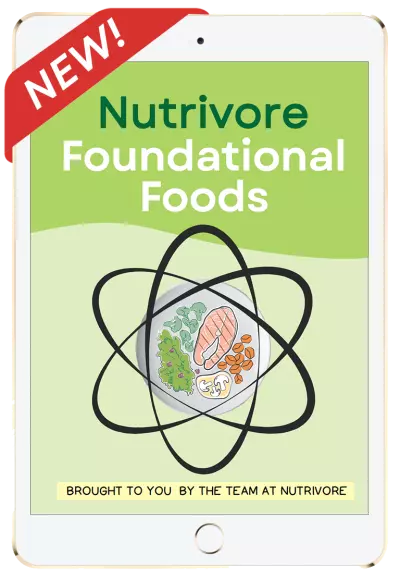
Nutrivore Foundational Foods
Learn what makes the 12 Nutrivore foundational food families nutritionally unique, their health benefits, which options are the most nutrient dense, how much of them to eat, plus various fun facts, practical pointers, and busting of common myths.
This very helpful resource will introduce you to new foods and expand your nutrition knowledge, making food choices easier!
Buy now for instant digital access.
Nutrivore Score for Wild Eastern Oysters – 3049
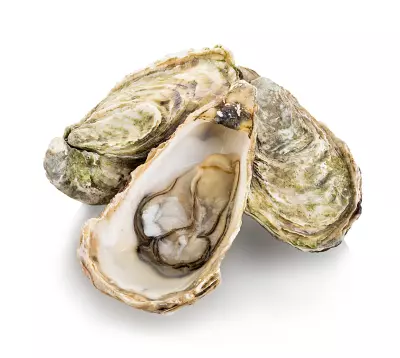
Eastern oysters have a Nutrivore Score of 3049, making them a super nutrient-dense food! Plus, they are a low-carb food; Eastern oysters have 3.1 grams of net carbs per 115-gram serving.
Per serving, Eastern oysters are a best source (>50% daily value) of copper, EPA+DHA, taurine, vitamin B7 (biotin), vitamin B12 (cobalamin), and zinc; an excellent source (20-50% daily value) of iodine, iron, and selenium; and a good source (10-20% daily value) of choline, manganese, and protein.
Ditch Diets. Embrace Nutrients. Start with These 5 Free Guides.
Sign up for the free weekly Nutrivore Newsletter and get 5 high-value downloads—delivered straight to your inbox—that make healthy eating simple and sustainable.
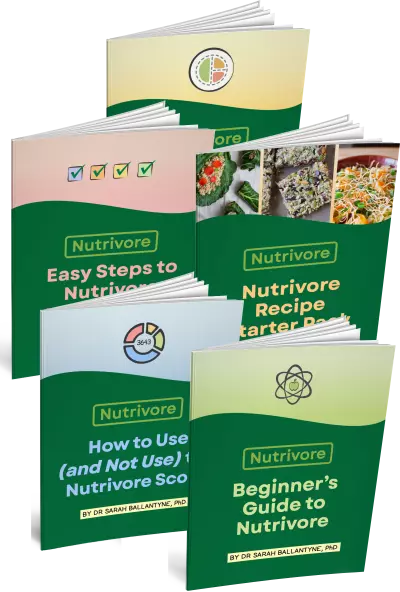
Wild Eastern Oyster Nutrition Facts
One serving of Eastern oysters is standardized to 115 grams (4 ounces). The average weight of a medium-sized oyster is 14 grams, which means: a 115-gram serving of Eastern oysters roughly equates to 8 medium-sized oysters. When you cook Eastern oysters, they reduce in volume by 35 to 50%: 100 grams raw Eastern oysters is equivalent to between 50 and 65 grams cooked Eastern oysters.
Eastern Oyster Nutrition Facts Per Serving
| Eastern oyster, wild, raw | Nutrivore Score: 3049 | Nutrient Density: Super! |
|---|---|---|
| Serving Size: 4 ounces (115 grams) | Protein: 6.6 grams | Net Carbohydrates: 3.1 grams |
| Calories: 59 | Total Fat: 2.0 grams | Dietary Fiber: 0.0 grams |
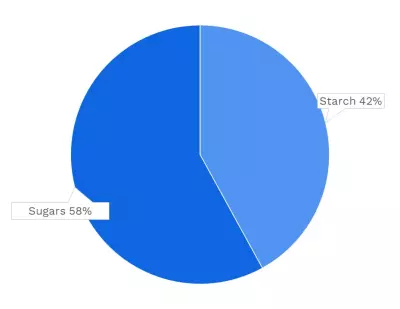
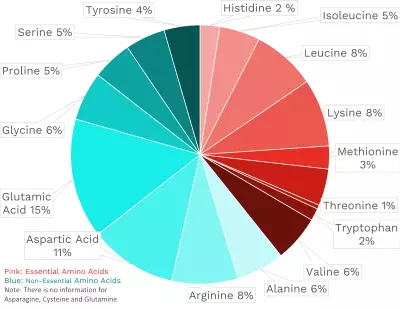
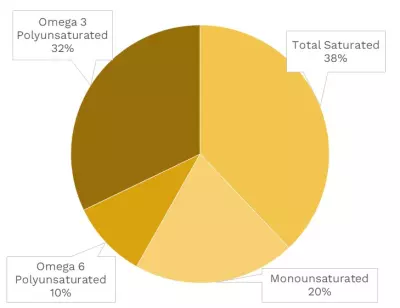
| VITAMINS | ||
|---|---|---|
| Vitamin A | 15.0 μg RAE | 2% DV |
| Vitamin B1 (Thiamin) | 20.7 μg | 2% DV |
| Vitamin B2 (Riboflavin) | 103.5 μg | 8% DV |
| Vitamin B3 (Niacin) | 1.1 mg | 7% DV |
| Vitamin B5 (Pantothenic Acid) | 0.3 mg | 5% DV |
| Vitamin B6 (Pyridoxine) | 35.7 μg | 2% DV |
| Vitamin B7 (Biotin) | 47.2 μg | 157% DV |
| Vitamin B9 (Folate) | 8.1 μg | 2% DV |
| Vitamin B12 (Cobalamin) | 10.1 μg | 419% DV |
| Vitamin C | 0.0 mg | 0% DV |
| Vitamin D (D2 + D3) | 0.0 μg | 0% DV |
| Vitamin E | 1.0 mg | 7% DV |
| Vitamin K | 1.2 μg | 1% DV |
| Choline | 74.8 mg | 14% DV |
| Myo-Inositol | 28.8 mg | ~ |
| CoQ10 | 0.5 mg | ~ |
| FUNCTIONAL FATS | ||
|---|---|---|
| MUFA | 0.3 g | 1% DV |
| ALA | 96.6 mg | 6% DV |
| EPA + DHA | 360.0 mg | 144% DV |
| CLA | 0.8 mg | ~ |
| Linoleic Acid | 0.0 g | 0% DV |
| MCT’s | 0.0 g | ~ |
| MINERALS | ||
|---|---|---|
| Calcium | 67.9 mg | 5% DV |
| Copper | 3286.7 μg | 365% DV |
| Iodine | 69.0 μg | 46% DV |
| Iron | 5.3 mg | 29% DV |
| Magnesium | 20.7 mg | 5% DV |
| Manganese | 340.4 μg | 15% DV |
| Phosphorus | 111.6 mg | 9% DV |
| Potassium | 179.4 mg | 4% DV |
| Selenium | 22.7 μg | 41% DV |
| Sodium | 97.8 mg | 4% DV |
| Zinc | 45.2 mg | 411% DV |
| PHYTONUTRIENTS | ||
|---|---|---|
| Carotenoids | 0.0 μg | ~ |
| Polyphenols | 0.0 mg | ~ |
| Phytosterols | 0.0 mg | ~ |
| Glucosinolates | ~ | ~ |
| Thiosulfinates | ~ | ~ |
| Betalains | ~ | ~ |
| AMINO ACIDS & PEPTIDES | ||
|---|---|---|
| Taurine | 456.2 mg | ~ |
| Ergothioneine | ~ | ~ |
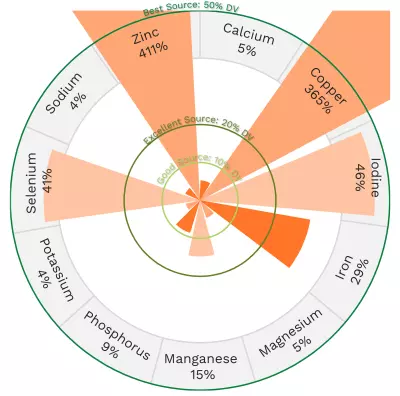
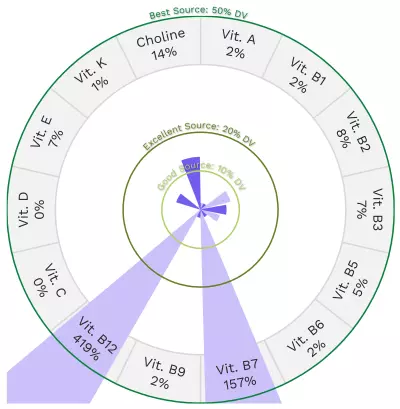
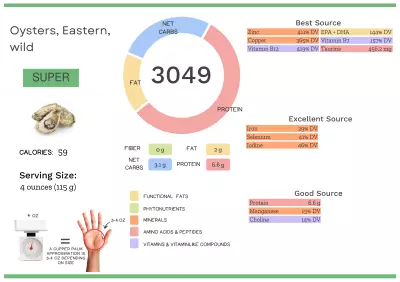

Quality Meat and Seafood
- 100% grass fed and finished beef, pasture-raised pork, pasture-raised chicken and wild-caught seafood
- Raised on regenerative family farms in the USA
- Fast delivery from our farms to your door
- Save 20% off for life, plus $15 off your first box, no coupon required
Eastern Oyster Nutrition Varies With Cooking, Processing and Source
The Nutrivore Score of Eastern oysters varies depending on the method of preparation (you don’t have to eat them raw!), processing, and the way in which it was raised (farmed or wild-caught). Typically wild-caught shellfish will have higher levels of nutrients which results in higher Nutrivore Scores, but including any type of shellfish in our diet, farmed or wild-caught, will result in plenty of health benefits! If fresh oysters aren’t readily available (or seem too overwhelming to prepare), canned oysters are conveniently accessible at many grocery stores.
| NUTRIVORE SCORE | |
|---|---|
| Eastern oyster, canned | 4147 |
| Eastern oyster, farmed, cooked, dry heat | 3036 |
| Eastern oyster, farmed, raw | 2974 |
| Eastern oyster, wild, cooked, dry heat | 3015 |
| Eastern oyster, wild, cooked, moist heat | 3043 |
| Eastern oyster, wild, raw | 3049 |
Oyster Nutrition Varies With Type
There are many types of oysters, each with their own unique taste and nutrient profile, which means their Nutrivore Scores also vary. Maximize all the nutrition that oysters have to offer by incorporating different types into your diet.
| NUTRIVORE SCORE | |
|---|---|
| Eastern oyster, wild, raw | 3049 |
| Pacific oyster, raw | 2255 |
Does the nutrition in oysters make you want to shell-ebrate? Maybe your friends will think it’s spe-shell too!
Health Benefits of Eastern Oyster Nutrients
Let’s take a closer look at all of the best and excellent source of nutrients found in a 4-ounce serving of Eastern oysters and see how they benefit our health.
Eastern Oysters Provide 419% DV Vitamin B12 (Cobalamin)
Eastern oysters are a phenomenal source of vitamin B12 (cobalamin), providing an impressive 419% of the daily value per 4-ounce serving!

Vitamin B12 (cobalamin) is a water-soluble vitamin that serves as a cofactor for enzymes involved in energy metabolism, red blood cell production, DNA synthesis, neurotransmitter production, nervous system health, and folate metabolism. As a result of these roles, vitamin B12 is vital for maintaining brain and nervous system health, and may have a protective effect against dementia, Alzheimer’s disease, and depression. There’s also some evidence vitamin B12 may be cancer-protective, possibly through supporting folate metabolism (which then assists in repairing DNA damage). Learn more about vitamin B12 here.
Eastern Oysters Provide 411% DV Zinc
Eastern oysters are a best source of zinc, providing a whopping 411% of the daily value per 4-ounce serving!
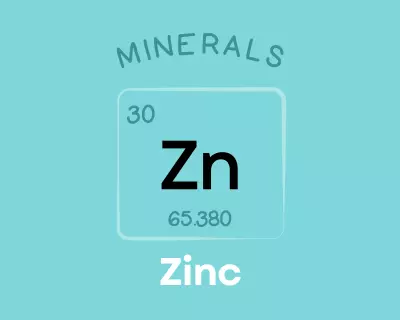
Zinc is an essential trace mineral that serves as a cofactor for over 300 enzymes and 1000 transcription factors, giving it important roles in immune function, sensory organ function, reproduction, gene regulation, DNA synthesis, wound healing, and the metabolism and activity of multiple other nutrients. Research shows it can reduce the duration of the common cold when taken shortly after the onset of illness, and can also benefit immune health in the elderly and among HIV/AIDS patients. Some studies also suggest a protective role of zinc in neurological conditions like Alzheimer’s disease and depression. Learn more about zinc here.
Eastern Oysters Provide 365% DV Copper
Eastern oysters are a fantastic source of copper, providing 365% of the daily value per 4-ounce serving!

Copper is a trace mineral that’s essential for all living organisms. Copper serves as a component of numerous enzymes and proteins in the body, giving it diverse roles in the growth, development, and maintenance of various organs (including the heart and brain), bone, and connective tissue. Copper is also involved in glucose and cholesterol metabolism, helps regulate gene expression, can scavenge free radicals, and is needed for the production of red blood cells. Learn more about copper here.
Eastern Oysters Provide 157% DV Vitamin B7 (Biotin)
Eastern oysters are a best source of vitamin B7 (biotin), providing 157% of the daily value per 4-ounce serving!
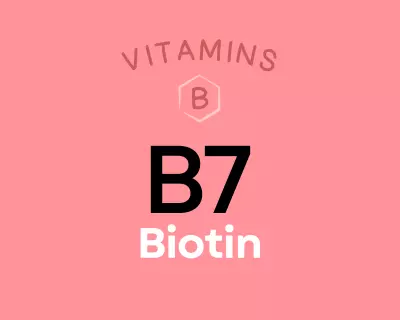
Biotin is a water-soluble B vitamin, also known as vitamin B7. Like other B vitamins, it plays an important role in energy metabolism (serving as a coenzyme for five carboxylase enzymes), neurotransmitter production, cellular function, and the function of various organs. Getting enough biotin can help support healthy nail and hair growth. It’s also particularly important during pregnancy, with low intakes increasing the risk of premature delivery and birth defects. There’s even some evidence biotin can benefit diabetics and reduce functional disabilities in people with multiple sclerosis. Learn more about biotin here.
Eastern Oysters Provide 144% DV EPA+DHA
Eastern oysters are also a best source of EPA+DHA, providing 144% of the daily value per 4-ounce serving!
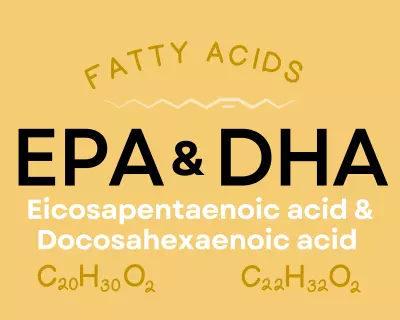
Eicosapentaenoic acid (EPA) and docosahexaenoic acid (DHA) are long-chain omega-3 fats that play important roles in neurological health, immune function, eye health and vision, inflammation, pain signaling, gut health, fetal development, and some aspects of cardiovascular health (like triglyceride levels and blood clotting). They exert many of their effects by helping form chemical messengers called prostaglandins, thromboxanes, and leukotrienes. EPA and DHA also serve as a structural component of the cell membrane, influencing important properties such as membrane fluidity and permeability. Small amounts of them can be synthesized from a shorter-chain omega-3 fat, alpha-linolenic acid (ALA). Learn more about EPA and DHA here.
Eastern Oysters Provide 456.2 mg of Taurine
Eastern oysters are a fantastic source of taurine, providing 456.2 mg of taurine per 4-ounce serving!
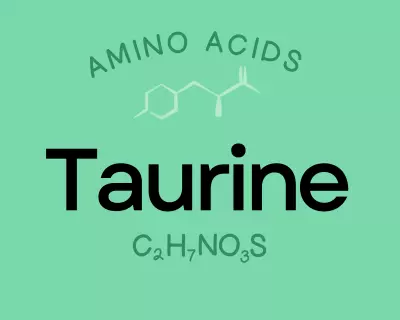
Taurine is a non-proteinogenic amino sulfonic acid that supports neurological development, serves as a major component of bile (which helps to digest fats), and plays a role in water and mineral regulation within the blood (including through membrane stabilization and calcium signaling). Taurine also regulates the immune system and serves as an important antioxidant, and it plays a role in cardiovascular function and the development of skeletal muscle.
Eastern Oysters Provide 46% DV Iodine
Eastern oysters are an excellent source of iodine, providing 46% of the daily value per 4-ounce serving!
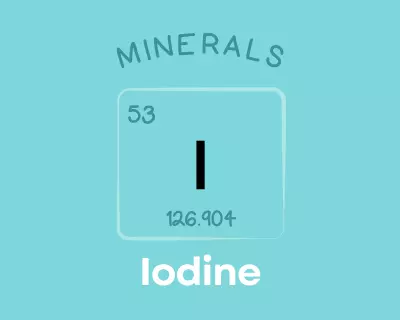
Iodine is a trace mineral that serves as a structural component of thyroid hormones, giving it a major role in thyroid health and function. As a result, it’s involved in regulating metabolism, reproductive function, fatty acid release, carbohydrate absorption, growth, and development. Consuming adequate amounts is particularly important during pregnancy (for preventing complications like preeclampsia, preterm delivery, miscarriage, and stillbirth) and during childhood (where it supports central nervous system development). Untreated iodine deficiency can lead to goiter and hypothyroidism. Learn more about iodine here.
Eastern Oysters Provide 41% DV Selenium
Eastern oysters are also an excellent source of selenium, providing 41% of the daily value per 4-ounce serving!
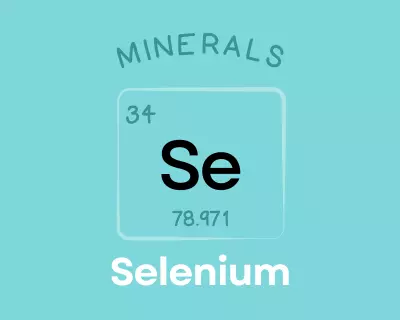
Selenium is a trace mineral needed by all mammals to sustain life. It serves as a component of the non-proteinogenic amino acids selenocysteine and selenomethionine, and also helps form over two dozen selenoproteins involved in reproduction, thyroid hormone metabolism, antioxidant defense, DNA synthesis, and immunity. Observational research suggests selenium could play a protective role against cancer, heart disease, asthma, and inflammatory bowel disease, although human trials have generally been lacking or contradictory. There’s also evidence that selenium can play a preventative role in asthma and inflammatory bowel disease, while also reducing mortality in patients with sepsis. Learn more about selenium here.
Eastern Oysters Provide 29% DV Iron
Eastern oysters are an excellent source of iron, providing 29% of the daily value per 4-ounce serving!
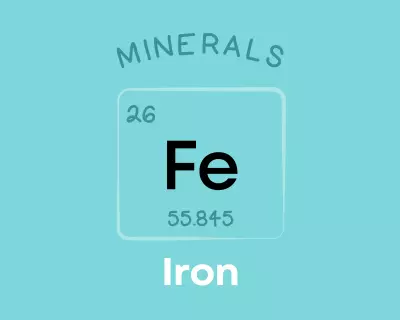
Iron is a mineral required for the metabolism of all living organisms. It’s needed for the function of numerous iron-dependent proteins involved in electron transport, energy metabolism, oxygen transport and storage, DNA replication and repair, free radical scavenging, and oxidative processes. It plays an important role in reproductive health, gestation, immunity, and central nervous system development. Learn more about iron here.
Learn What Foods Are the Best Sources of Every Nutrient
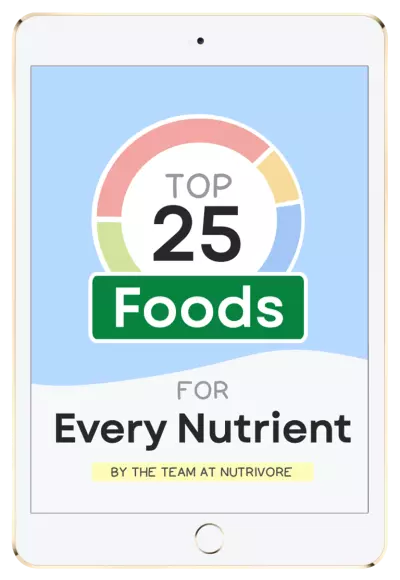
The Top 25 Foods for Every Nutrient
The Top 25 Foods for Every Nutrient e-book is a well-organized, easy-to-use, grocery store-friendly guide to help you choose foods that fit your needs of 43 important nutrients while creating a balanced nutrient-dense diet.
Get two “Top 25” food lists for each nutrient, plus you’ll find RDA charts for everyone, informative visuals, fun facts, serving sizes and the 58 foods that are Nutrient Super Stars!
Buy now for instant digital access.
How Much Eastern Oysters Should We Eat Per Day?
Shellfish, especially bivalves, are nutrient dynamos which can even rival liver in terms of nutrient density!
Fish and shellfish are not only nutrient-dense sources of highly-digestible gut-friendly complete protein and the best food sources of the very important long-chain omega-3 fatty acids, DHA and EPA, but they’re outstanding sources of important nutrients in which we are commonly deficient. Eating seafood reduces risk of cardiovascular disease, type 2 diabetes, obesity and some forms of cancer.
Shellfish are extremely rich sources of vitamin B12, zinc, copper and selenium while also providing impressive amounts of vitamin A, vitamin C, vitamin D, iron, copper, calcium, phosphorus, potassium, magnesium, manganese, iodine and selenium. Shellfish also contain smaller but still notable amounts of vitamins B1, B2, B3, B5, B6, and B9, while also providing dozens of trace minerals.
In fact, every 100 grams per day of seafood decreases all-cause mortality by 7%. And, every 20 grams per day of fish decreases cardiovascular disease mortality by 4%. Aim to eat three or more servings of seafood weekly (and up to every meal!). Learn more about seafood here.
Oysters are great for supporting skeletal health, producing red blood cells, maintaining nerve cell and immune health, supporting thyroid function, and protecting the body against damage from free radicals. It’s always best to mix up the foods you eat day to day (aiming for a wide variety of different fish and shellfish throughout the week), and oysters definitely have a place at the table.
Easily track your servings of Nutrivore Foundational Foods!

The Nutrivore Weekly Serving Matrix
The Nutrivore Weekly Serving Matrix digital resource is an easy-to-use and flexible weekly checklist designed to help you maximize nutrient-density and meet serving suggestions of Nutrivore foundational foods, all without having to weigh or measure your foods!
Includes a 22-page instructional guide and downloadable interactive guides.
Buy now for instant digital access.
cITATIONS
Expand to see all scientific references for this article.
Chin SF, Liu W, Storkson J, Ha Y, Pariza M. Dietary sources of conjugated dienoic isomers of linoleic acid, a newly recognized class of anticarcinogens. Journal of Food Composition and Analysis. 1992 Sept(5):185-197. DOI:10.1016/0889-1575(92)90037-K
Clements RS Jr, Darnell B. Myo-inositol content of common foods: development of a high-myo-inositol diet. Am J Clin Nutr. 1980 Sep;33(9):1954-67. doi: 10.1093/ajcn/33.9.1954. PMID: 7416064.
Frida Food Database. National Food Institute, Technical University of Denmark: Oyster, raw
Pravst I, Zmitek K, Zmitek J. Coenzyme Q10 contents in foods and fortification strategies. Crit Rev Food Sci Nutr. 2010 Apr;50(4):269-80. doi: 10.1080/10408390902773037. PMID: 20301015.
USDA Food Central Database: Mollusks, oyster, eastern, wild, raw
Watanabe T, Kioka M, Fukushima A, Morimoto M, Sawamura H. Biotin content table of select foods and biotin intake in Japanese. Int J Anal Bio-Sci. 2014. Vol 2(4):109-125.
Wójcik OP, Koenig KL, Zeleniuch-Jacquotte A, Costa M, Chen Y. The potential protective effects of taurine on coronary heart disease. Atherosclerosis. 2010 Jan;208(1):19-25. doi: 10.1016/j.atherosclerosis.2009.06.002. Epub 2009 Jun 11. PMID: 19592001; PMCID: PMC2813349.

